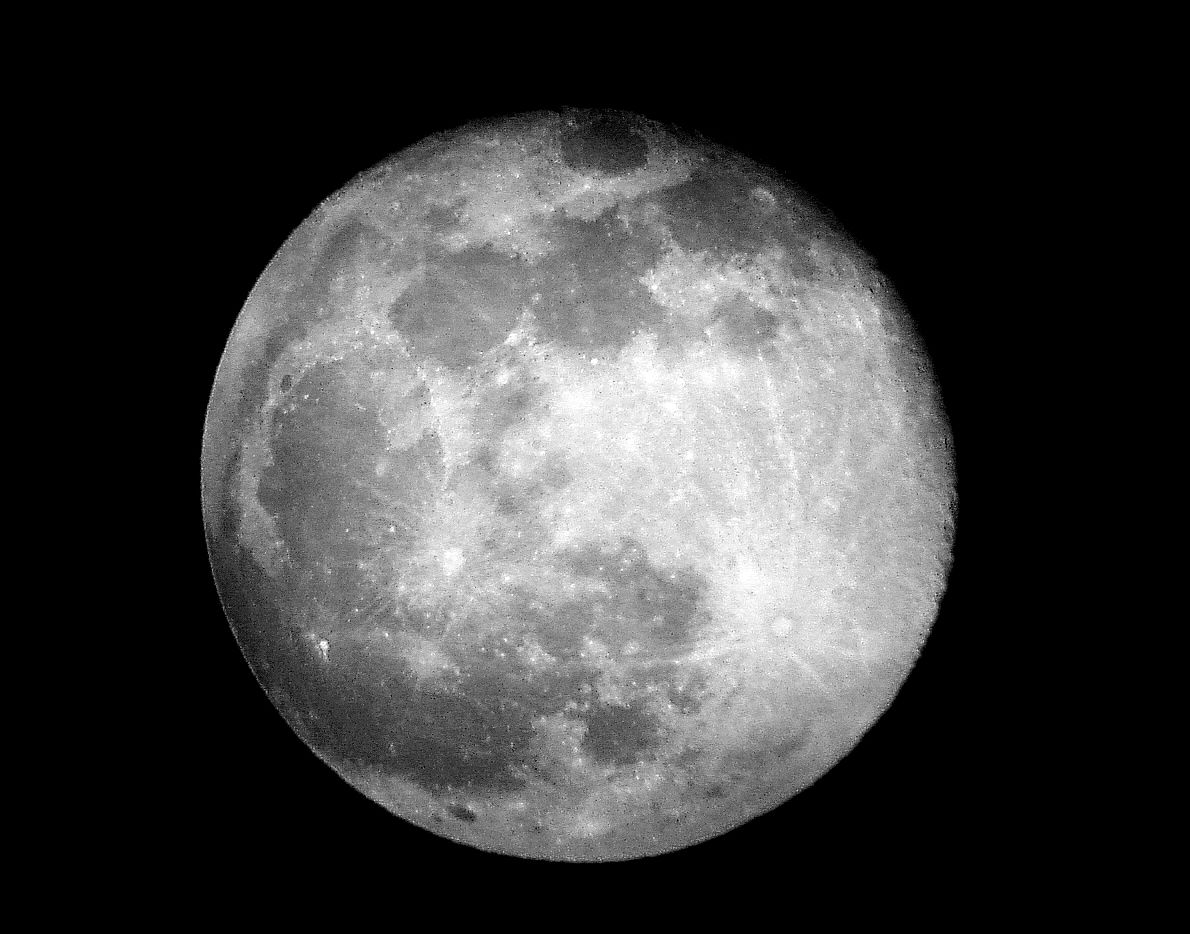
Earth's powerful gravity tugged the moon into its oddball shape long ago, shortly after both bodies formed, a new study suggests.
Tidal forces exerted during the early days of the solar system can explain most of the moon's large-scale topography, including its slight lemon shape, reports the study, which was published online today (July 30) in the journal Nature.
The new findings could help scientists tackle longstanding lunar mysteries, such as why the moon's near side is dominated by dark volcanic deposits, while the far side is not, researchers said. [How the Moon Formed: A Timeline (Gallery)]
"What is the origin of that asymmetry?" said study lead author Ian Garrick-Bethell, of the University of California, Santa Cruz. "Chipping away at this problem of the shape of the moon can give us insight into those types of fundamental geology problems," he told Space.com.
A young, molten moon
Scientists think the moon formed from debris blasted into space when a mysterious planet-size body slammed into the young Earth about 4.5 billion years ago. The moon was born hot, and it came into existence quite close to our home planet. (The moon has been slowly spiraling away ever since.)
The newborn moon was thus primed to be sculpted by Earth's gravity, and that's exactly what happened, researchers say.
Indeed, scientists have posited for more than a century that tidal forces helped shape the molten moon, causing bulges that froze into place when Earth's natural satellite cooled down and solidified. But the new study provides a much more detailed understanding of how this likely happened.
Get the Space.com Newsletter
Breaking space news, the latest updates on rocket launches, skywatching events and more!
Garrick-Bethell and his team studied topographic data gathered by NASA's Lunar Reconnaissance Orbiter and information about the moon's gravity field collected by the agency's twin GRAIL (Gravity Recovery and Interior Laboratory) spacecraft. Though the researchers took a global view of the moon, they focused on areas outside of the body's biggest impact craters, which can complicate such analyses.
The data strongly implicate tidal effects as a key shaper of the moon, researchers said. For example, tidal forces pulled on the lunar crust, stretching it out and heating it up in places. This process thinned out the crust at the lunar poles and thickened it in the regions that lined up with Earth, helping sculpt the moon into a lemon with two small bulges (one on the side facing our planet, and one on the side directly opposite).
Such tidal heating could have occurred only when the moon's crust was floating on a sea of molten rock, largely decoupled from the rest of the body, Garrick-Bethell said.
"This happened a long time ago, when the moon was not completely solid," he said. "This was in the first 100 to 200 million years of lunar thermal evolution."
Also contributing to the moon's overall shape were more straightforward tidal deformations, which Garrick-Bethell likened to squeezing the lemon with your hands, and rotational forces, which cause spinning bodies such as the moon to flatten at the poles and bulge out near the equator.
When the moon cooled, the changes wrought by all of these processes were frozen in place.
Interestingly, the long axis of the moon doesn't point directly toward Earth as it likely did long ago; instead, it's offset by about 30 degrees. This probably happened when volcanic activity, impact cratering and other events made the moon's interior a much less homogeneous place, researchers said.
"Internal density anomalies have formed, and they've kind of canted the moon," Garrick-Bethell said. "At some point in lunar history, you have these events that took place that caused these density anomalies and shifted the density axis away from the shape axis."
Understanding other moons and planets
The new results could have applications beyond the moon, potentially helping researchers better understand any celestial body strongly affected by tidal forces, Garrick-Bethell said.
"This idea was inspired by Europa," he said, referring to the huge moon of Jupiter. Europa is similar today to Earth's moon long ago, he added, in that it harbors a solid shell (of ice in Europa's case rather than rock) sitting atop an ocean layer (which consists of liquid water rather than magma).
The study could even yield insights about the evolution of faraway alien planets, Garrick-Bethell said.
"Tides are so ubiquitous; they're everywhere across the galaxy," he said. "So understanding tidal processes is always important."
Follow Mike Wall on Twitter @michaeldwall and Google+. Follow us @Spacedotcom, Facebook or Google+. Originally published on Space.com.
Join our Space Forums to keep talking space on the latest missions, night sky and more! And if you have a news tip, correction or comment, let us know at: community@space.com.

Michael Wall is a Senior Space Writer with Space.com and joined the team in 2010. He primarily covers exoplanets, spaceflight and military space, but has been known to dabble in the space art beat. His book about the search for alien life, "Out There," was published on Nov. 13, 2018. Before becoming a science writer, Michael worked as a herpetologist and wildlife biologist. He has a Ph.D. in evolutionary biology from the University of Sydney, Australia, a bachelor's degree from the University of Arizona, and a graduate certificate in science writing from the University of California, Santa Cruz. To find out what his latest project is, you can follow Michael on Twitter.









